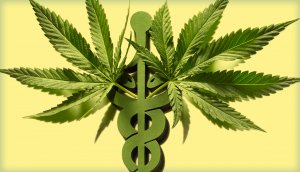
Current Legal Stances
The legalization of marijuana, also known as cannabis, has been a controversial topic on the American political landscape for decades. Marijuana is classified as a Schedule I drug, which according to the United States Drug Enforcement Agency (DEA), is any drug which has “no currently accepted medical use and a high potential for abuse”. Both active ingredients in marijuana, cannabidiol (CBD), the non-psychoactive component, and tetrahydrocannabinol (THC), the psychoactive component, are considered illegal federally.
Many states have taken legal stances which branch from the federal government’s position on cannabis use. Some states now allow marijuana use for recreational purposes, while others limit it’s use to medicinal practice. Research into potential benefits has greatly increased as states have begun legalization, but still remains hindered by federal laws which prohibit funding of marijuana research using federal proceeds as well as threaten repercussions to banks and lenders who do so.
Cannabis and Cancer
Despite the fact that marijuana, both natural and synthetic, are classified by the DEA as Schedule I drugs, synthetic derivatives of marijuana have been approved for medicinal use in the field of oncology by the FDA. Marinol, approved in 1986, and Cesamet, approved in 2006, are synthetic THC derivatives authorized for the treatment of chemotherapy induced nausea, vomiting, and anorexia. (The fact that the DEA does not recognize any medical benefits to marijuana, yet the FDA, another federal entity does, is both confusing and counterintuitive.)
According to research studies involving 2454 participants with cancer, evidence of treatment benefits was conclusively positive. In those utilizing marijuana as an antiemetic (anti-nausea medicine) for chemotherapy induced nausea and vomitting, cannabinoids were reported to be more effective than 9 of the top FDA approved medicines including the synthetic cannabis derivatives. The study also noted that strong evidence of marijuana as a means of pain control, with far less side effects, and a much lower addiction propensity than the opiates usually prescribed. Additionally, physicians specializing in the care of those suffering from cancer were the strongest advocates for cannabis use, with 82% of oncologists recommending the use of marijuana in cancer treatment.
Cannabis Use in Epilepsy
Another promising area for the medical use of cannabis is epilepsy. The use of marijuana as an anti-epileptic (seizure reduction/prevention) medication recently gained national attention through the story of Charlotte Figi. Charlotte a young girl who suffers from a seizure disorder known as Dravet Syndrome, suffered from numerous seizures daily, and required around the clock care because her seizures caused her to stop breathing. Her prognosis was grim, and it was expected she would not live much longer or suffer irreversible brain damage during one of her many seizures. When her parents ran out of options, after exhausting every mix of anti-epileptic treatment prescribed by neurologists, they began looking into the use of cannabis. After hearing success stories, her mother reached out to seizure specialists in Denver, in hopes of saving her daughters life. Charlotte became the youngest patient to be treated with cannabis after a special high CBD, low THC strain, aptly named Charlotte’s Web, was engineered for her. Charlotte went from nearly 300 seizures weekly, and a prognosis of likely death, to now suffering only 2 or 3 monthly. This strain and others similar to it are now being used effectively to treat both children and adults seeking epilepsy treatment through the Comprehensive Epilepsy Program at Denver Health and Hospital.
Other studies have supported cannabis use as an epilepsy treatment. In a study of participants with difficult to control epilepsy, participants were asked to report not only their seizure activity, but also changes in several other categories such as sleep, appetite and mood. The study found that all patients had a noted decrease in seizure activity, and furthermore 89% of patients reported improved sleep quality, appetite, and mood. While these studies are smaller due to the already mentioned problems obtaining funding, strong consideration must be given to the efficacy of cannabis when 100% or participants reported improvements in their seizure condition, and a large majority also reported positive developments in other aspects of their daily living.
Inconsistencies and Side Effects
In addition to the FDA approved use of marijuana synthetics in the treatment of cancer related pain, nausea, and vomiting, the strongest evidence exists for the use of marijuana and cannabinoids as pharmacotherapies for epilepsy, chronic pain, neuropathic pain, and spasticity associated with multiple sclerosis. Conditions such as glaucoma had inconsistent results, while others such as anorexia showed regular inefficacy. Cannabis use for psychiatric conditions was also shown to be ineffective. Side effects such as short-term memory, motor coordination, and judgment loss as well as paranoid ideation and psychotic symptoms, albeit rare, were observed.

Financial Impact of Marijuana Legalization
Research was conducted to observe the financial impact marijuana has had in areas which had already legalized marijuana use. Using data on prescription filling rates compiled from Medicare a cost analysis was performed. Conditions for which there is a current precedent, or label option use, were analyzed including anxiety, depression, glaucoma, nausea, pain, psychosis, seizures, sleep disorders and spasticity After analysis the results found that with the exception of glaucoma, and to some extent spasticity, prescription numbers fell in areas having adopted medicinal marijuana statutes. It was concluded that given the high cost of prescription medications, adopting laws which would allow medicinal marijuana use could allow significant budgetary relief with regards to federal spending. They estimated that the government saved nearly half a billion dollars from 2010-2013 due to states who had already adopted medicinal marijuana laws.
Get the Facts: Form Your Own Conclusions
Ultimately if considering the use of medicinal marijuana take time to consider your personal circumstances. Where you live, the medical condition which afflicts you, potential benefits vs. side effects, and cost could all impact your decision, and should be discussed with your healthcare provider.
References
Abrams, D. I. (2016). Integrating cannabis into clinical cancer care. Current Oncology, 23(Suppl 2), S8. doi: 10.3747/co.23.3099
Bradford, A. C., & Bradford, W. D. (2016). Medical marijuana laws reduce prescription medication use in Medicare Part D. Health Affairs, 35(7), 1230-1236.
https://doi.org/10.1377/hlthaff.2015.1661
Hill, K. P. (2015). Medical marijuana for treatment of chronic pain and other medical and psychiatric problems: a clinical review. JAMA: The Journal of the American Medical Association, 313(24), 2474-2483. doi:10.1001/jama.2015.6199
Ladino, L. D., Hernández-Ronquillo, L., & Téllez-Zenteno, J. F. (2014). Medicinal marijuana for epilepsy: a case series study. Canadian Journal of Neurological Sciences, 41(6), 753-758. doi:10.1017/cjn.2014.37
Maa, E., & Figi, P. (2014). The case for medical marijuana in epilepsy. Epilepsia, 55(6), 783-786. https://doi.org/10.1111/epi.12610
United States Drug Enforcement Administration. (n.d.). Drug scheduling. Retrieved from https://www.dea.gov/drug-scheduling
